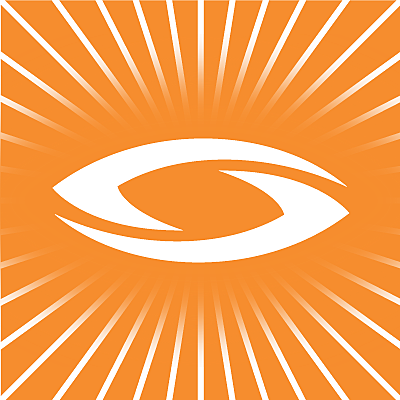“Thump, thump, thump, thump,” Jennifer can hear and feel her heart rate rising as she picks up her speed during her morning run. Feeling the sweat drip down her neck while simultaneously feeling the cold wind, she begins to get in her zone. Looking down at her smart watch, she reads 152 BPM (Beats Per Minute), her target rate zone. Knowing this information, she continues at that pace to increase her overall cardiovascular fitness.
Wearables are becoming widely used. According to the
Huffington Post, the number of wearable devices shipped to consumers is expected to reach 130 million by 2018. Understanding your body and health has become easier for individuals by using mass data collected on a daily basis from wearable devices. From fitness bands to smart watches to Google Glass, wearables are being widely adopted by consumers. Interestingly enough, professionals are more open to using wearables than consumers, especially professionals in the healthcare industry.
For Doctors
Doctors, specifically surgeons, have been quick to adopt wearables such as Google Glass.
Pierre Theodore, MD, performed the first surgery approved with Google Glass. He was able to preload CT and X-ray images. "To be able to have those X-rays directly in your field without having to leave the operating room or to log on to another system elsewhere, or to turn yourself away from the patient in order to divert your attention, is very helpful in terms of maintaining your attention where it should be, which is on the patient 100 percent of the time.” Soon, we will start to see a good mixture of wearables and
healthcare robotics in hospitals across the country.

Until recently, there were no studies on wearables improving clinical outcomes in the Operating Room (OR). Stanford Medical University and VitalMedicals conducted a
study with 20 Stanford residents performed two different surgeries on dummies, using Google Glass in one and without in the other. The surgeries with Google Glass performed “markedly better.” The residents with Google Glass noticed minor implications 8.8 -10.5 seconds faster with Google Glass such as critical desaturation and hypotension in patients. There are already a number of companies solely dedicated to building a business on healthcare applications for Google Glass. You can read more information
here.
For Patients
According to
VentureBeat, wearables are also becoming very useful on the patient side while also saving hospitals money. The Zephyr Anywhere’s BioPatch is an FDA-approved, small device that is attached to a patient’s chest monitoring their vitals minute-by-minute and collecting medical-grade data for doctors’ use.
Typically, patients are checked on every 4-8 hours, which is not always ideal for the amount of attention each patient needs. The BioPatch alerts nurses via smartphones, giving them the ability to be more efficient in prioritizing patients.

The BioPatch monitors patients 24 hours a day. Patients with serious illness can wear them home, and it can notify the hospital of any bad signs. This is beneficial to the patient because it prevents the stress of returning to the hospital and reducing unnecessary hospital admissions saves money for everyone involved.
Whether it benefits doctors, hospitals, nurses or patients, the adoption of wearables is still in its growth phase but we will start to see various wearable devices sprout in the coming years.
 Until recently, there were no studies on wearables improving clinical outcomes in the Operating Room (OR). Stanford Medical University and VitalMedicals conducted a study with 20 Stanford residents performed two different surgeries on dummies, using Google Glass in one and without in the other. The surgeries with Google Glass performed “markedly better.” The residents with Google Glass noticed minor implications 8.8 -10.5 seconds faster with Google Glass such as critical desaturation and hypotension in patients. There are already a number of companies solely dedicated to building a business on healthcare applications for Google Glass. You can read more information here.
Until recently, there were no studies on wearables improving clinical outcomes in the Operating Room (OR). Stanford Medical University and VitalMedicals conducted a study with 20 Stanford residents performed two different surgeries on dummies, using Google Glass in one and without in the other. The surgeries with Google Glass performed “markedly better.” The residents with Google Glass noticed minor implications 8.8 -10.5 seconds faster with Google Glass such as critical desaturation and hypotension in patients. There are already a number of companies solely dedicated to building a business on healthcare applications for Google Glass. You can read more information here.
 The BioPatch monitors patients 24 hours a day. Patients with serious illness can wear them home, and it can notify the hospital of any bad signs. This is beneficial to the patient because it prevents the stress of returning to the hospital and reducing unnecessary hospital admissions saves money for everyone involved.
Whether it benefits doctors, hospitals, nurses or patients, the adoption of wearables is still in its growth phase but we will start to see various wearable devices sprout in the coming years.
The BioPatch monitors patients 24 hours a day. Patients with serious illness can wear them home, and it can notify the hospital of any bad signs. This is beneficial to the patient because it prevents the stress of returning to the hospital and reducing unnecessary hospital admissions saves money for everyone involved.
Whether it benefits doctors, hospitals, nurses or patients, the adoption of wearables is still in its growth phase but we will start to see various wearable devices sprout in the coming years.




